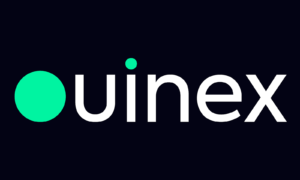You’ll remember pie charts from your school days: it felt like each and every instructor, no matter the subject area, was harping on the benefits of graphing things on pie charts. And it’s really no wonder, for pie charts are a breeze to read, visually appealing, and provide a representation of wholes.
Designed to make it easier for the average investor to plan, manage, and analyze their portfolios, M1 Finance’s pie charts are a simple yet novel feature which sets them apart in the competitive field of robo-advisor solutions.
Founding the company in 2015, M1 Finance’s CEO Brian Barnes recognized something was lacking in the growing market of investment platforms. Namely, anything which could be called “meaningful innovation”. This sentiment is what set Barnes on the path of creating a transformative all-in-one finance super app.
Investors are not always known for their organization and bookkeeping. In fact, amidst the frenzy of our doing, we tend to resemble the disheveled eccentric more so than the straightlaced desk jockey. With a range of markets to keep our fingertips on, and investments which bleed dizzyingly across sector and “genre”, it’s not only difficult to keep things tight and organized, but it’s also difficult to get a real sense of what your portfolio is really like – what we can call its reality.
M1’s pies make this happen. This is an aspect of M1 Finance that is consistently overlooked. While its pie-based approach has been lauded the internet over, positive reviews tend to focus on M1 Finance’s sheer ease of use. And it is easy: with a number of pre-built “expert” pies to choose from, the folks at M1 Finance have not only made the process of investing your money simple and engaging, but fun as well.
Still, in our opinion, M1 Finance’s pie charts are all about visuality. Pie charts effectively put your portfolio on a pedestal, allowing the user to visualize, or picture it holistically. Compared to other robo-advisors like Betterment, this also means a greater sense of customization. You can add and remove “slices” of the pie, then quickly rebalance your portfolio with a click or two, all the while keeping the totality of things within view.
With M1 Finance, investors gain clarity. Let’s take a closer look at just how M1 Finance’s pie charts accomplish this.
Expert Pies – Powered by Quantitative Analysis
M1’s Expert Pies use quantitative analyses of stocks, exchanged traded funds (ETFs), and bonds to determine the best allocation for each “type” of investor. Whether you are interested in general investing, planning for retirement, socially responsible investing, stocks and bonds, or some other strategy, M1’s emphasis on using mathematical and statistical modeling can help you begin investing wisely.
- Customization: note that M1’s expert pies are not set in stone, but meant as templates which you can tweak to fit your own personal designs. You can always leave an expert pie as-is, but it is often the case that one size does not fit all – using an expert pie as a “base” and then developing it to fit your individual investment profile is a sound strategy for users of all stripes.
- Quantitative Analysis: fancy words, but what do they mean for your investing? Simply put, quantitative analysis sets out to determine market behavior by way of mathematical and statistical modeling. Quantitative analysts would posit a “reality” based on numbers, and this is a good starting point for any novice investor unsure of the contemporary market landscape.
- Buy-and-Hold: M1’s expert pies, and perhaps the platform at large, is best suited for investors looking to establish a long-term, buy-and-hold position. Since their upgraded service (M1 Plus) only has two trading windows, this means orders will not go through until the next trading day.
Basic Pies – Created From the Ground up
You can always create your own pies entirely from scratch. This method could be a better fit if you are a seasoned, savvy investor who knows exactly what they want, but are still looking to take advantage of M1’s unprecedented visuality.
With the ability to invest in fractional shares, it’s easy to get started with making your very own custom pie-based portfolio. Though M1 Finance unfortunately does not offer mutual funds, you can tailor a portfolio that is entirely unique through an assortment of stocks, bonds, and low cost ETFs. M1 Finance compares favorably to Robinhood when it comes to accessibility and ease of use.
- Account Types: M1 Finance offers a variety of account types to suit each and every investor. These include taxable accounts, checking accounts, and traditional IRA, Roth IRA, and rollover IRA.
- Easy Manipulation: though we recommend that most new users start out with an “expert” pie and go from there, M1 has made it pretty easy and straightforward to make your very own investment pies from scratch. It’s all about manipulation, and it’s only a matter of manually adding and subtracting “slices” from your total pie.
- Automatic Allocation: when you manipulate one of your investment pies by removing or adding a stock, bond, or ETF, M1 Finance conveniently balances each slice to match your desired target allocation. This makes for an intuitive process which has the feel of today’s “point and click” app culture.
The Bottom Line – Holistic Investing Made Easy
We can’t say enough about M1 Finance’s approach to investing. Not only do their pie charts offer a means to visualize your portfolio, but it makes the process of investing fun, engaging, and personal.
Some of M1’s additional products, like M1 Borrow, make it easier than ever to get into the game of stock trading. And don’t think it’s too late: though profits and margins have soared since the advent of the global pandemic, the markets have historically trended upwards and upwards. Start investing today and grab your “piece of the pie”.
Related M1 Finance Comparison Posts
- M1 Finance vs. Webull
- M1 Finance vs. Vanguard
- M1 Finance vs. Fidelity
- M1 Finance vs. Robinhood
- M1 Finance vs. Betterment
- M1 Finance vs Charles Schwab
- M1 Finance vs SoFi Invest
- M1 Finance vs. Acorns
- M1 Finance vs. Wealthfront



































